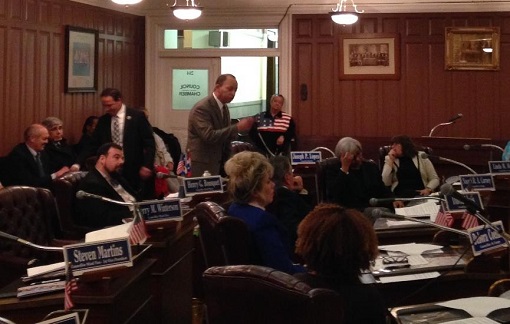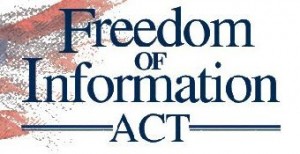Of Roots and Reconciliation in the Whaling City
By Joanne Mendes
Thomas Wolfe once wrote, “I have to see a thing a thousand times before I see it once.” Sometimes you need to step away from a place before you can truly appreciate all that it has to offer. This certainly is true about my relationship with New Bedford.
In 1975 I graduated from Bishop Stang High School, went off to college and never looked back. I couldn’t wait to leave Southeastern MA, convinced that there was something bigger and better waiting for me. In my eyes, New Bedford was a depressing place, certainly not a place that held a future for the young professional I strove to be. All I could see was a city that used to be. Used to be a nice place to live, before “urban renewal” tore into its heart; used to be the leader in fishing, textiles and history. New Bedford was a city in decline, a city lost unto itself, a city divided.
For the next 30 years I bounced around the United States. Although I lived primarily in New England, my job afforded me the opportunity to travel extensively. Of course, I did come back, mostly for weekends, holidays and vacations. After all, being brought up an only child in an Italian/Portuguese household, home is always where your family is. And while I loved being with my family, and enjoyed our times together, I had no desire to stay.
And then the unthinkable happened. My parents got older, and I was downsized from my job. As my Dad’s health declined, there was only one thing to do, move closer so I could be there for them. I’d like to say I came back with a great attitude and loving thoughts, but I’d be lying. I did not return like a lamb, more like a lion roaring, kicking, screaming and lamenting. I was convinced I would have no friends, no culture, and no entertainment – in short, no life.
But once I settled in, my emotions settled down. As I spent time and reminisced with my parents, I began to record their stories. Ancestry research is like weaving. To quote Grandma Regis, “The most beautiful tapestry starts with but one thin piece of thread.”
This city was built by hard working immigrants, my ancestors included, who came to this country looking for a better life. As I sifted through local records and historical documents, I soon found that my family threads were intricately woven into New Bedford’s. For example, my paternal grandfather, who also worked the ferry to Oak Bluffs, laid most of the sidewalks in this city. Several local schools, including the Hathaway were constructed by my maternal grandfather, who also moonlighted as a carpenter, renovating some of the finer homes from Salters Point to Sagamore.
Looking at the city through this lens gave a whole new meaning to the word home. Suddenly, I’m not just riding down Purchase Street with my Dad, instead I am transported to the “Holy Acre” where my great grandparents and their families lived and worked.
At Purchase and Austin Street, Horatio Welding fades and becomes Giusti’s Baking Company circa 1943. This where MY personal history began, when a baker home on leave from the Navy met a bookkeeper looking for a ride home so she can save streetcar fare back to Dartmouth.
On State Street I am at Great Aunt Jo’s, where a houseful of boisterous Italians celebrate yet another birthday with a delicious strawberry filled cream cake from New Bedford Baking Company. Two doors in from the corner of Chestnut and North, I don’t see an empty lot; instead I see the faded image of my paternal grandparent’s last home. I am standing on the sidewalk with my avo, crying because the ice cream bar he bought for me melted onto the sidewalk. At Christmas, when I walked Clasky (Common) Park, I am five again and holding hands with my parents as we ooh and ahh over the lights and decorations. Every path I walked, every road I drove became a wonderful journey down memory lane.
The City New Bedford was once the crown jewel of the manufacturing world. Names like: Wamsutta, Revere Copper, Cornell Dubilier and Acushnet were known worldwide for their quality products. I am proud to say, my immigrant ancestors were part of what made New Bedford great. From Atlas Tack to Morse Twist Drill; Paulding to GroTogs; Gilt Edge Silk to “The Process”, my ancestors, like yours, were a proud, humble group that became this fine city’s heart and soul.
It’s now 2014, and the landscape has changed. Downtown, once a desolate place when Saltmarshes, Star Store and Cherry and Webb left, is revitalized with a new hotel, great restaurants, art galleries and boutiques nestled between two stalwarts – the Whaling Museum and the Zeiterion Theater. You want culture; I’d stack the New Bedford Symphony against any other. Entertainment: go downtown on the first Thursday of the month and say AHA!
Same is true for the festivals from First Night to July 4 to the Working Waterfront. You will experience a comfortable family atmosphere while listening to good music and savoring the local cuisine. If you want more, check out the Z. In the six years I’ve resided here I’ve watched some memorable performances from Bill Cosby to Midtown Men to Do Wop. And by the way, you haven’t lived until you’ve heard the Vienna Boys Choir perform in St. Anthony’s Church.
It only took 38 years for me to recognize New Bedford as the rare gem she is. It also took me that long to realize that she and I both have a lot in common. We are rich in heritage, but still suffer from an inferiority complex. Our well-worn facades proudly display scars from our storied past. Still, what we’ve lost in youth and beauty, we more than make up for in maturity and wisdom. It took me a long time, but I’ve finally reconciled myself with my past, and am ready to face a brighter future. It’s high time for New Bedford to do the same.
Now that I’ve seen where I’ve been it’s time for me to figure out what my next role is in this play called life. That cute little bookkeeper (I called her Mom) passed away last year, and is now with my Dad (her sailor). My reasons for moving back no longer exist so it’s time for me to be moving on. Unlike the last time I left “for good”, this time, I will happily carry with me the spirit and pride of my ancestors and the many contributions they made to New Bedford and this region. When someone asks me where I am from, I’ll proudly say I come from a city that once lit the world, and one that I know will light it again. The City that proudly bears the name – New Bedford.
Thomas Wolf was wrong – you can go home again. You just have to have the right attitude when you do.
Have an opinion you want to share? E-mail mike@newbedfordguide.com.









